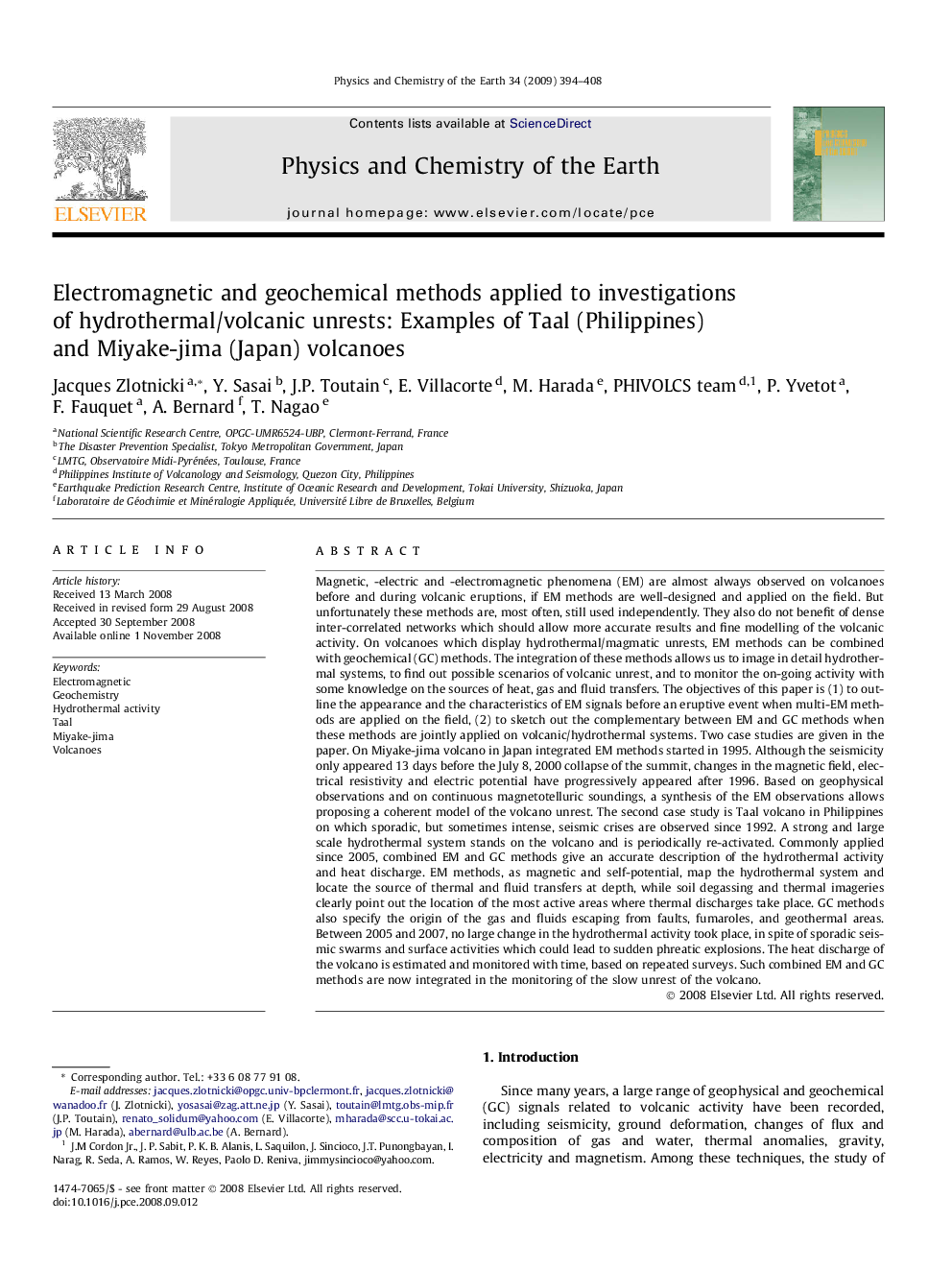| کد مقاله | کد نشریه | سال انتشار | مقاله انگلیسی | نسخه تمام متن |
|---|---|---|---|---|
| 4721585 | 1639391 | 2009 | 15 صفحه PDF | دانلود رایگان |

Magnetic, -electric and -electromagnetic phenomena (EM) are almost always observed on volcanoes before and during volcanic eruptions, if EM methods are well-designed and applied on the field. But unfortunately these methods are, most often, still used independently. They also do not benefit of dense inter-correlated networks which should allow more accurate results and fine modelling of the volcanic activity. On volcanoes which display hydrothermal/magmatic unrests, EM methods can be combined with geochemical (GC) methods. The integration of these methods allows us to image in detail hydrothermal systems, to find out possible scenarios of volcanic unrest, and to monitor the on-going activity with some knowledge on the sources of heat, gas and fluid transfers. The objectives of this paper is (1) to outline the appearance and the characteristics of EM signals before an eruptive event when multi-EM methods are applied on the field, (2) to sketch out the complementary between EM and GC methods when these methods are jointly applied on volcanic/hydrothermal systems. Two case studies are given in the paper. On Miyake-jima volcano in Japan integrated EM methods started in 1995. Although the seismicity only appeared 13 days before the July 8, 2000 collapse of the summit, changes in the magnetic field, electrical resistivity and electric potential have progressively appeared after 1996. Based on geophysical observations and on continuous magnetotelluric soundings, a synthesis of the EM observations allows proposing a coherent model of the volcano unrest. The second case study is Taal volcano in Philippines on which sporadic, but sometimes intense, seismic crises are observed since 1992. A strong and large scale hydrothermal system stands on the volcano and is periodically re-activated. Commonly applied since 2005, combined EM and GC methods give an accurate description of the hydrothermal activity and heat discharge. EM methods, as magnetic and self-potential, map the hydrothermal system and locate the source of thermal and fluid transfers at depth, while soil degassing and thermal imageries clearly point out the location of the most active areas where thermal discharges take place. GC methods also specify the origin of the gas and fluids escaping from faults, fumaroles, and geothermal areas. Between 2005 and 2007, no large change in the hydrothermal activity took place, in spite of sporadic seismic swarms and surface activities which could lead to sudden phreatic explosions. The heat discharge of the volcano is estimated and monitored with time, based on repeated surveys. Such combined EM and GC methods are now integrated in the monitoring of the slow unrest of the volcano.
Journal: Physics and Chemistry of the Earth, Parts A/B/C - Volume 34, Issues 6–7, 2009, Pages 394–408